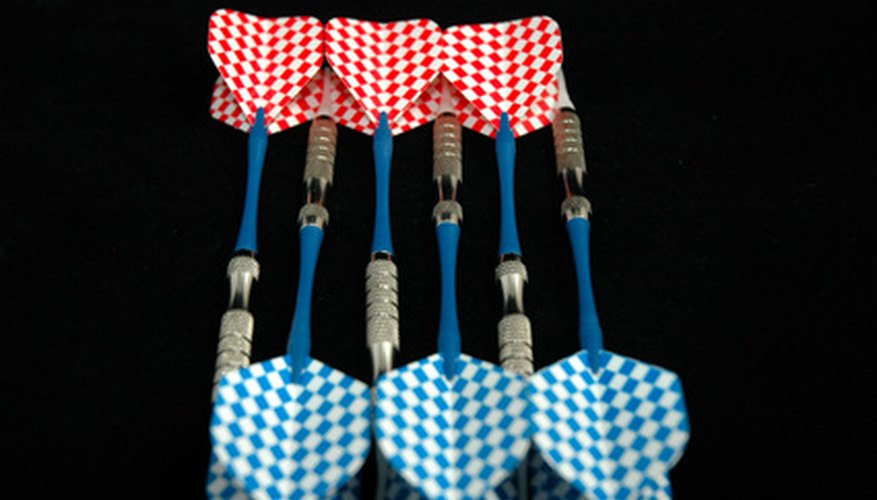Dart flights stabilise a dart throw differently depending on their shape, size and texture. Creating your own dart fights allows you to personalise your darts to your own preferences and style of dart throwing. You can choose the material, texture and design of your flights to express yourself and to give yourself a leg up on the competition. Making your own flights also gives you greater control over the feel of your darts.
- Dart flights stabilise a dart throw differently depending on their shape, size and texture.
- Making your own flights also gives you greater control over the feel of your darts.
Cut a 2-inch-by-2-inch square from a piece of paper.
Fold the paper square to create diagonal and horizontal crease lines across the paper.
Open the paper square.
Create the dart flight's basic shape. To do this, bring the centre points of all the edges together, folding the paper along the previously made crease marks. Lay the flaps flat, creating an upside down triangle.
Cut the top tips of the triangle to give your flight a modern look. Traditional shapes for darts are the kite, the pear and the slim. Cut off the triangle's top tips to make a diamond kite shape. Round the triangle's top tips for the pear shape, and cut the triangle's outside edges to slim the flight.
- Create the dart flight's basic shape.
- Round the triangle's top tips for the pear shape, and cut the triangle's outside edges to slim the flight.
Open the square paper.
Cut the square paper along both diagonal creases. This will create four flight templates. Only one is needed for a template.
- Cut the square paper along both diagonal creases.
Trace the flight template two times onto a plastic sheet with a pen.
Cut out both flights with a utility knife.
Draw your design on both flights.
Cut a thin, rectangular slit halfway up the first flight. Begin cutting at the bottom of the flight.
Cut a thin, horizontal slit halfway down the second flight. Begin cutting at the top of the flight.
- Cut a thin, rectangular slit halfway up the first flight.
- Cut a thin, horizontal slit halfway down the second flight.
Slide the two slits together to interlock the flights.
Line up the flights along the slits so that tops and bottoms connect exactly.
Glue the flights together along the seam.
TIP
If you have a flight from an old dart, you may use it as your template.
WARNING
Do not cut the slits too large or too small. The size affects the flights' ability to interlock. A utility knife can make cutting plastic easier and more precise than cutting with scissors.
